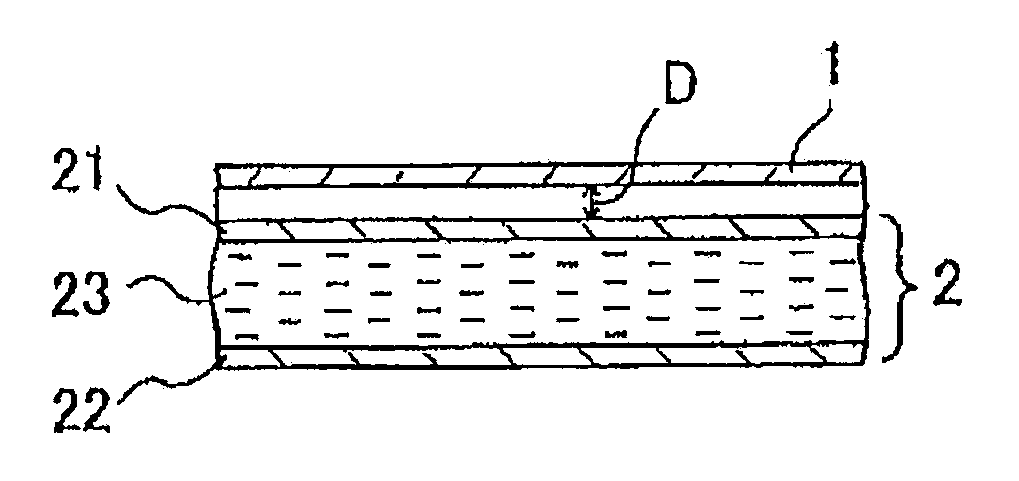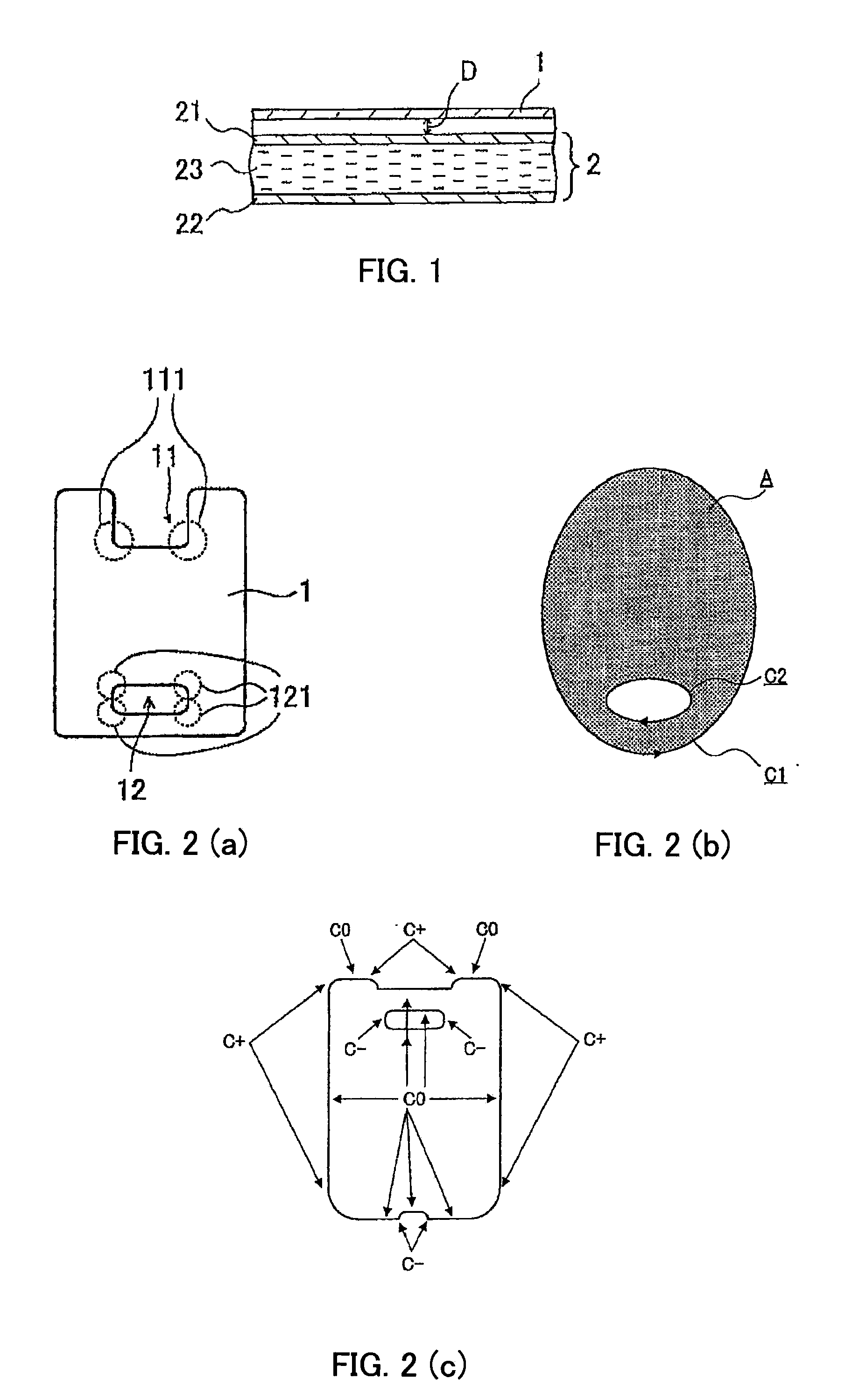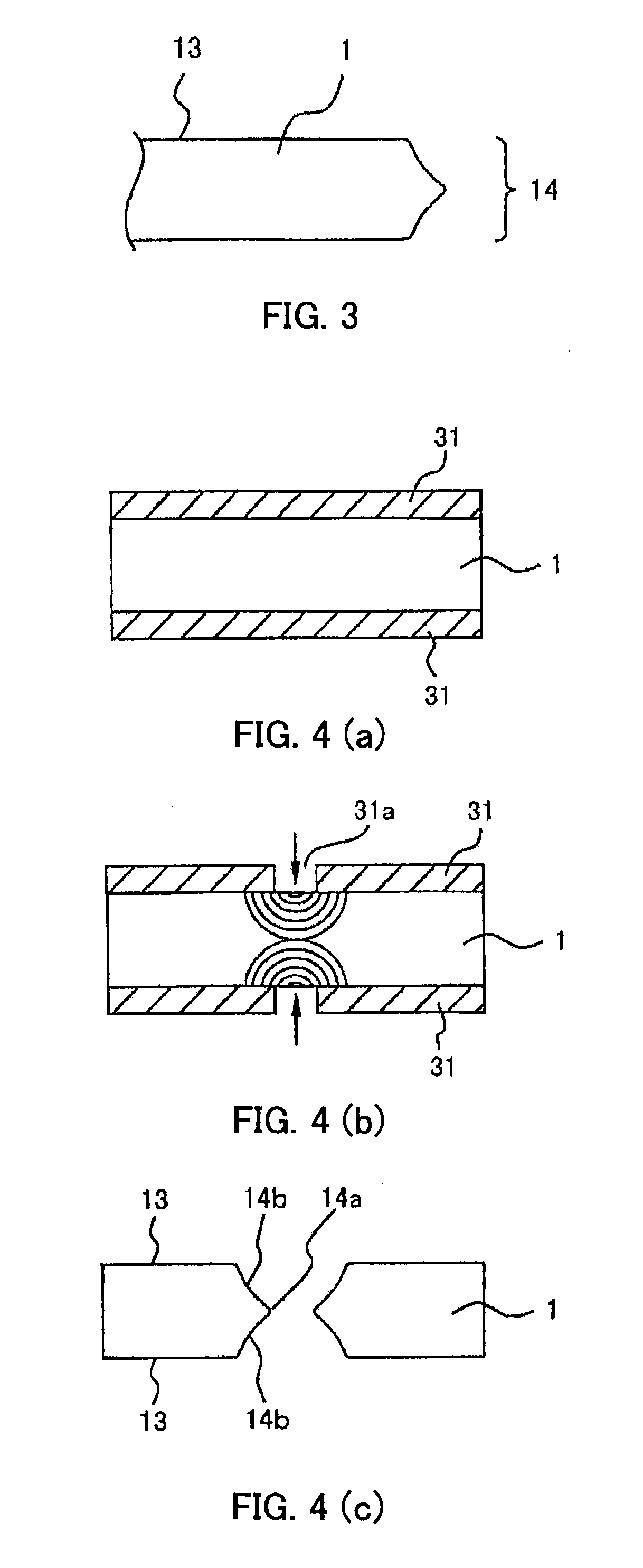Cover glass for mobile terminals, manufacturing method of the same and mobile terminal device
- Summary
- Abstract
- Description
- Claims
- Application Information
AI Technical Summary
Benefits of technology
Problems solved by technology
Method used
Image
Examples
example 1
[0060]First, aluminosilicate glass containing 63.5 percent by weight of SiO2, 8.2 percent by weight of Al2O3, 8.0 percent by weight of Li2O, 10.4 percent by weight of Na2O and 11.9 percent by weight of ZrO2 was formed into plate-shaped glass substrates (sheet-shaped glass) with a sheet thickness of 0.5 mm by a down-draw method. Surface roughness (arithmetic means roughness Ra) of the main surface of the sheet-shaped glass formed by the down-draw method was measured using an atomic force microscope, and was 0.2 nm.
[0061]Next, both main surfaces of the sheet-shaped glass were coated with negative type hydrofluoric-acid resistant resist in a thickness of 30 μm, and the hydrofluoric-acid resistant resist underwent baking processing at 150° C. for 30 minutes. Then, the hydrofluoric-acid resistant resist was exposed from the both surfaces through a photo-mask having a pattern of the external form including portions having the negative curvature as shown in FIG. 2(a), the exposed hydrofluo...
example 2
[0065]The glass cut by etching from which the resist was removed in aforementioned Example 1 was immersed in a treatment bath of mixed acid of 60 percent of potassium nitrate (KNO3) and 40 percent of sodium nitrate (NaNO3) kept at 385° to 405° C. for 4 hours to undergo ion exchange treatment, and chemically strengthened cover glass for a cellular phone was prepared where a compressive stress layer of 150 μm was formed in the glass surface.
[0066]When surface roughness of the main surface and edge face was measured as in Example 1, surface roughness of the main surface was 0.3 nm and surface roughness of the edge face was 1.4 to 1.5 nm. Further, when checked whether micro-cracks were present in the edge face, it was confirmed that any micro-crack did not exist.
example 3
[0067]Cover glass for a cellular phone was prepared as in above-mentioned Example 1 except that the shape of the external form of the cover glass was a rectangular shape (size: 50 mm×40 mm, thickness: 0.5 mm) as shown in FIG. 5. Surface roughness of the main surface and edge face of the cover glass and micro-cracks were checked as in Example 1, and it was confirmed that surface roughness was the same as in Example 1, and that any micro-crack did not exist.
PUM
| Property | Measurement | Unit |
|---|---|---|
| Thickness | aaaaa | aaaaa |
| Percent by mass | aaaaa | aaaaa |
| Fraction | aaaaa | aaaaa |
Abstract
Description
Claims
Application Information
 Login to View More
Login to View More - R&D
- Intellectual Property
- Life Sciences
- Materials
- Tech Scout
- Unparalleled Data Quality
- Higher Quality Content
- 60% Fewer Hallucinations
Browse by: Latest US Patents, China's latest patents, Technical Efficacy Thesaurus, Application Domain, Technology Topic, Popular Technical Reports.
© 2025 PatSnap. All rights reserved.Legal|Privacy policy|Modern Slavery Act Transparency Statement|Sitemap|About US| Contact US: help@patsnap.com



